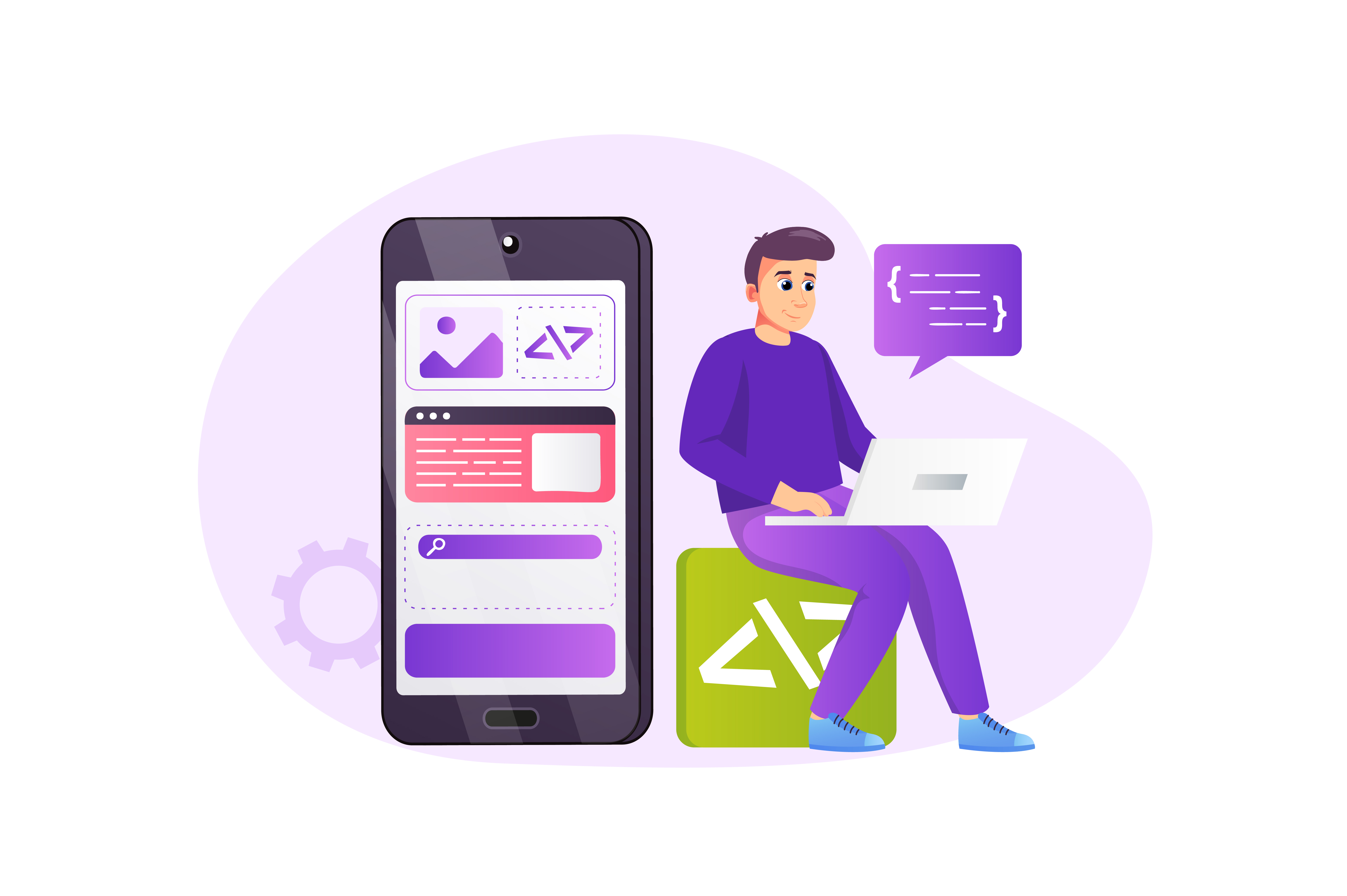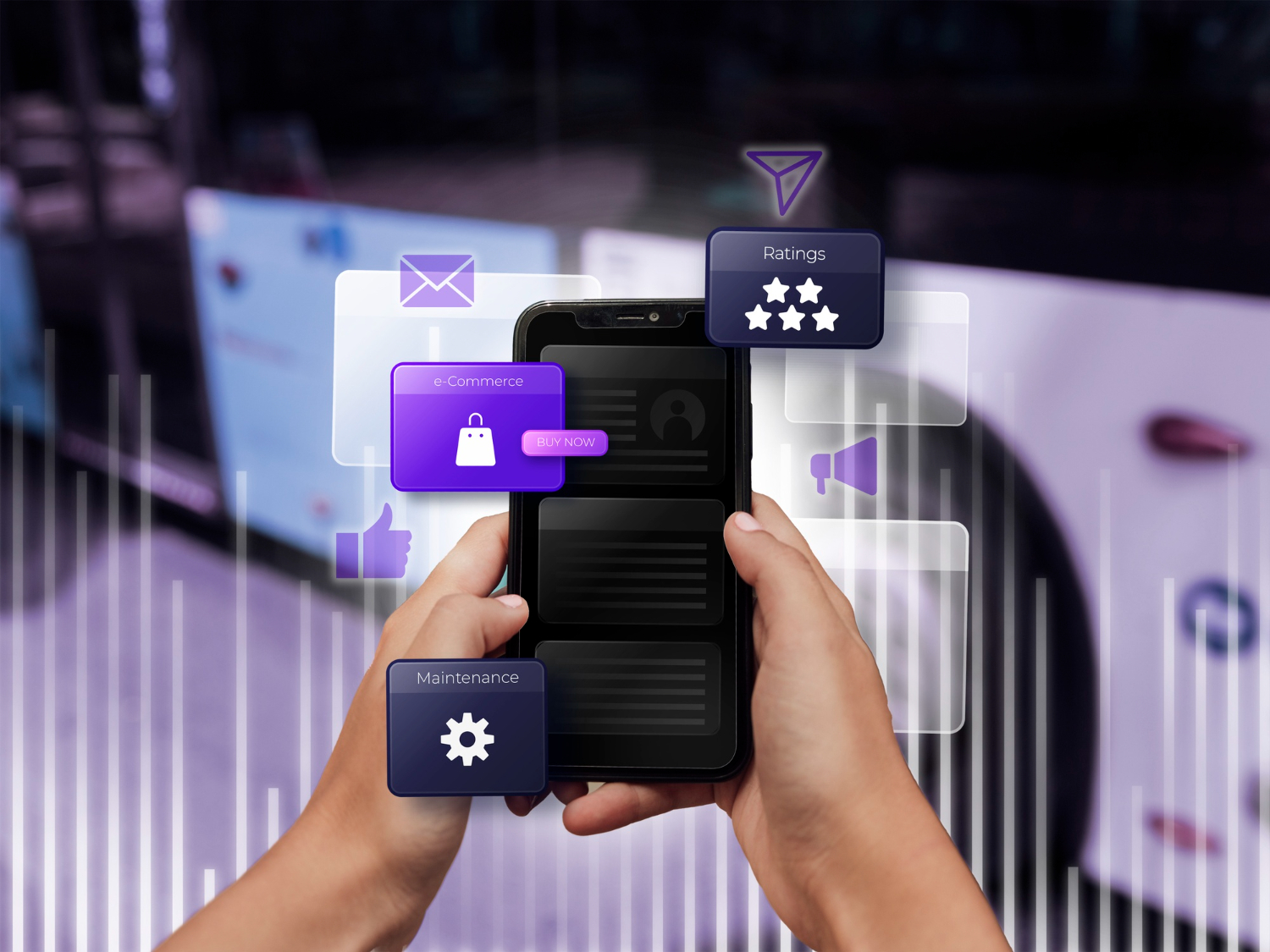A SaaS application is a type of software that people can use through the internet. You don’t need to install anything on your computer. You just open a website, sign in, and start using it. These apps live on remote servers and are managed by SaaS developers. Most of the time, you pay monthly or yearly to use them. When building SaaS applications, developers focus on making sure many people can use the same app at once, each with their own settings and data.

Why It Is Worth Using SaaS Applications
There’s a reason more people and businesses use SaaS web apps. They’re simple to start with. You just neew to know what web app development is, sign up and use them right away. No need to install or fix anything. If something breaks, the company behind the app takes care of it. You don’t have to worry about updates or security patches.
For those building a SaaS project, there’s also a lot of room to grow. You can start small and add new features as more people use it. You don’t have to finish everything on day one. Just make sure the app works, fix what users don’t like, and keep going. At the end of the day, SaaS makes things easier. It saves time, money, and effort. Whether you're using or building one, a good SaaS app fits into daily life without making it harder.
Types of SaaS Applications: Introduction
If you're thinking about building a SaaS platform, it helps to know what kinds of apps already exist. Each one solves a different problem and works in its own way. Some help you talk with others, some keep your files safe, and others help teams work better together.
1. Communication Tools
These SaaS apps focus on helping people talk, share, and stay connected. Examples include Zoom, Slack, and Microsoft Teams.
These tools allow voice calls, video chats, text messages, and file sharing. Some also have channels or groups for different topics or teams. This helps keep conversations organized. Users can also tag others, reply to messages, and see updates in real time. When building a SaaS platform in this area, it’s key to make the app light and responsive. Users expect quick delivery of messages and stable video calls, even with poor internet.
2. File Storage and Sharing
Apps like Google Drive, Dropbox, and OneDrive help people store files in the cloud. That means your files don’t live on one device. Instead, they’re saved online, and you can reach them from anywhere.
These SaaS tools are helpful for backing up files, sharing with others, and working together. You can upload photos, videos, documents, and almost anything. With the right settings, you can also share links with coworkers or friends. If you’re thinking of building a SaaS platform like this, focus on safe storage, easy file access, and a clean layout. People want to drag, drop, and move files without stress.
3. Project Management
Tools like Trello, Asana, ClickUp, and Monday.com help teams organize work. These SaaS based applications break big projects into smaller tasks. Each task can have a due date, notes, and be assigned to someone. Most also include dashboards. That’s a visual board showing all tasks, who is doing them, and how close they are to being done. You can sort by project, person, or deadline. Some tools use boards with cards (like Trello), while others use lists or calendars. Each company can choose what works best.
Research shows that using SaaS tools for project management boosts flexibility and speed: 77.8% of users reported better setup and faster start times, and 76.2% said the features made project work easier.

4. Accounting and Finance
This type helps users keep an eye on money. Examples include QuickBooks, Xero, and FreshBooks. These SaaS tools are good for tracking income, paying bills, sending invoices, and more.
They’re used by freelancers, small businesses, and even big companies. The app does the hard math and keeps numbers organized. You can also see reports and graphs that make the money picture clear. If you're building a SaaS platform in this space, it's smart to make the numbers easy to read and the setup fast. Users want to focus on running their business, not learning how to use the tool.
5. Marketing and Email Tools
These apps help companies talk to customers and grow their reach. Think of Mailchimp, HubSpot, or ConvertKit. These SaaS based applications help you build email lists, send campaigns, and track results.
Users can design emails, schedule when they go out, and see who opened them. Some tools also help build landing pages, forms, or pop-ups. Many of these apps also give stats. For example, how many people clicked a link or signed up? These numbers help users know what’s working and what’s not.
When creating a tool like this, focus on simple templates, clear dashboards, and easy contact list management. Also, many users want automatic actions, like sending an email when someone signs up.
6. Customer Support Tools
Apps like Zendesk, Intercom, and Help Scout help teams answer customer questions. These tools organize emails, live chat, and support tickets in one place. Instead of losing messages in a messy inbox, everything is sorted and tracked. Each question gets a number (a ticket), and the support team can reply, tag, or assign it to someone.
Some tools also let users chat live or offer answers through a knowledge base. This saves time for both users and teams. If you're building a SaaS platform for customer support, speed is important. No one wants to wait hours for help. Also, having simple ways to find past chats or answers makes the experience smoother.
7. HR and Team Tools
Human resource (HR) apps like Gusto, BambooHR, or Zoho People help with hiring, payroll, and team records. These apps let companies manage job posts, resumes, schedules, and employee details all in one place.
They also help track time off, sick days, and work hours. Some include payroll features, so businesses can pay workers directly through the platform. When building this type of SaaS based application, focus on making tasks easy to complete. Let users fill out forms, upload documents, and run reports without a lot of clicks. A report predicts the global HR SaaS market will grow from $354 billion in 2024 to $1.67 trillion by 2037—a 12.7% yearly rise/
SaaS based applications can be built for many different needs. Whether it’s chatting with friends, sending emails to customers, or tracking money, these apps help people work and live better.
How to Build a SaaS App: Step-by-Step Guide
The demand for SaaS is growing every year. People want tools they can use anywhere, at any time. For those interested in SaaS application development, there’s a lot of opportunity to create something helpful, profitable, and easy to grow.
Step 1: Find the Right Problem to Solve
Every good SaaS web application development service begins with a clear problem. Before you write any code, ask yourself: What problem does this solve? Who will use it? Why would they pay for it?
Look around in your daily life or in your job. What takes too much time? What feels messy or confusing? That’s often a good place to start. You don’t need to fix everything at once. Start with a narrow focus. If your app helps just one group of people do something faster or easier, you’re on the right path.
Step 2: Know Your Users
Once you know the problem, learn about the people who have it. This helps you make better choices as you go. Talk to real users. Ask what they do now, what they like, and what’s missing. Watch how they work. These talks don’t need to be long. Just listen carefully. This step helps shape the design, layout, and features. When developing SaaS applications, it’s easy to guess what people want. But it’s better to ask.
Step 3: Plan Your Core Features
Now it's time to sketch out the features. What does your app need to do first? What can wait until later? Focus on the most basic version of your app. This is called an MVP—a “minimum viable product.” It has just enough features to be useful. This helps you test the idea without spending too much time or money.
Don’t get caught up in extras. For example, if you're building a task app, you don’t need dark mode, custom emojis, and a full calendar from day one. Start with the task list, due dates, and reminders. That’s enough. Clear planning makes the rest of the SaaS development process easier.

Step 4: Choose the Right Tech Stack
The tech stack is the set of tools and languages used to build your app. It includes your frontend (what users see), backend (what runs in the background), and database (where information is stored).
Popular tools include:
- Frontend: React, Vue, or Angular
- Backend: Node.js, Django, Ruby on Rails
- Database: PostgreSQL, MongoDB, MySQL
Pick tools that are easy to update and supported by a strong community. Also, make sure your team is familiar with them. There’s no single “best” choice. What matters is that it fits your project and skills.
Step 5: Design the User Experience (UX)
People should enjoy using your app. It should feel simple, fast, and clear. Start with wireframes. These are simple drawings that show where things go—buttons, forms, pages, and menus. Tools like Figma or Sketch can help.
Keep things clean. Don’t clutter the screen. Make sure each page focuses on just one main action. During SaaS application development, always test your design with a few users. Watch them use your wireframes. If they get confused, adjust the layout. Good UX can make or break your product—even if the features work well.
Step 6: Build the Backend and Frontend
Now the real coding begins. Start with the backend. This is where all your business logic lives. It handles user accounts, stores data, runs processes, and manages rules. You’ll also set up an API (a way for the frontend to talk to the backend).
Next, build the frontend. This is the part your users see. It includes buttons, forms, text fields, and more. The frontend sends requests to the backend and shows the results. This part of the SaaS development process can take time. Break it into small pieces. Build one part, test it, and move on.
Step 7: Add User Accounts and Payments
Most SaaS apps require users to create accounts. They log in, save their work, and maybe upgrade later. So, build a system for sign-up, login, password reset, and account settings. If your app charges money, set up payments too. You can use Stripe or PayPal to handle this. Many tools offer ready-made options to help with subscriptions, invoices, and receipts.
Step 8: Test Everything Carefully
Before launching, test your app. Not just once, many times. Click every button. Try to break it. Fill out forms the wrong way. Use fake data. Invite friends or coworkers to test too. Ask them to share what’s confusing or slow. You want to catch bugs early. It’s much easier to fix them now than after launch. Also test on different devices and browsers. People use phones, tablets, and desktops. Make sure your app works well on all of them.
Step 9: Launch a Beta Version
Don’t wait for everything to be perfect. Launch a simple version to a small group first. This is called a beta. Invite early users to try the app and give feedback. This helps you spot problems, improve features, and find what users love. Keep the group small—maybe 10 to 50 users. Stay in touch with them. Their thoughts are gold during SaaS application development.
Step 10: Collect Feedback and Improve
After launch, stay curious. Ask users what they like and what’s hard. Watch how they use the app. Tools like Hotjar or FullStory can record sessions (with permission) so you can see what’s really happening.
Don’t guess—learn from real use. Then fix what’s wrong, add new features slowly, and improve what’s already working. This never ends. The best SaaS development process is ongoing. You keep learning, fixing, and growing.
Step 11: Monitor Performance and Scale
As more users join, your app needs to stay fast and safe. Use tools to track speed, uptime, and errors. Fix slow pages and broken links. Think about scaling, too. That means your app should handle more users without crashing. Services like AWS, Google Cloud, or Heroku can help.If things break, have a plan. Backups, alerts, and quick support matter here.
Step 12: Keep Updating and Supporting Users
Now that your app is live, your job is to keep it useful. Add features that people ask for. Fix bugs. Improve speed. Answer support tickets. Your users will guide your roadmap. If you listen and act, your app can grow fast. When developing SaaS applications, the work doesn’t end after launch. It’s just the beginning.
SaaS mobile app development is a journey. It starts with one small idea, grows into a working app, and keeps changing over time. Every step—planning, designing, coding, testing, launching—matters. You don’t need to get it perfect. You just need to solve a problem for real people.

Common Problems When You Build a SaaS Application
When you decide to build a SaaS application, it can be exciting—but also tricky. Even simple ideas can run into big problems during development. Whether you’re just starting or already working with a team, knowing the common mistakes will save you time, money, and stress. Many new teams face the same issues. The good news? Most of these can be avoided with the right approach:
- Poor planning before you start. Jumping in without a plan can waste time and money. Before you build a SaaS application, define the problem, target users, and key features. Sketch out what success looks like. This keeps your team focused and avoids confusion later.
- Trying to add too many features. Many teams want to add everything at once. But this only slows down progress. When you create a SaaS application, start with the basics. Build a small, working version (MVP) first. You can always improve it later.
- Weak user experience (UX). If your app feels confusing or slow, people will leave. Good design is just as important as good code. Ask users to test early designs. Fix anything that feels hard to use. SaaS app developers should focus on keeping the layout clear and simple.
- Security mistakes. Your app stores user info, so it must stay safe. Not using secure logins, skipping encryption, or ignoring updates can lead to problems. Always use strong security methods. Protect user data like it’s your own.
- Ignoring feedback. You’re not building the app for yourself. Always ask users what works and what doesn’t. Keep listening, even after launch. This is the only way to grow and improve.
Every new idea comes with challenges. But if you plan well, stay focused on the user, and fix problems early, you’ll have a much smoother path. Whether you’re just starting to create a SaaS application or already working with a team of SaaS app developers, these tips can help you build something people will enjoy and trust. And don’t forget—if your SaaS mobile app works well and solves a real problem, users will keep coming back.
